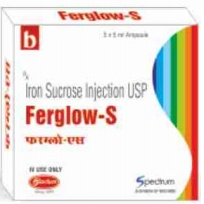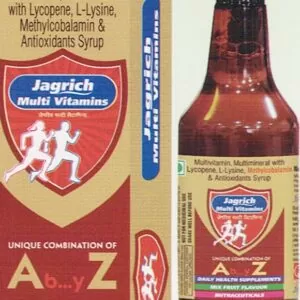Following intravenous administration, this is dissociated into Iron and Sucrose by the reticuloendothelial system, and Iron is transferred from the blood to a pool of Iron in the liver and bone marrow. Ferritin, an Iron storage protein, binds and sequesters Iron in a nontoxic form, from which Iron is easily available. Iron binds to plasma transferrin, which carries Iron within the plasma and the extracellular fluid to supply the tissues. The transferrin receptor, located in the cell, and the transferrin-receptor complex is returned to the cell membrane. Transferrin without Iron (apotransferrin) is then released to the plasma. The intracellular Iron becomes (mostly) haemoglobin in circulating red blood cells (RBCs). Transferrin synthesis is increased and ferritin production reduced in Iron deficiency.The converse is true when Iron is plentiful.
Significant increases in serum iron and serum ferritin and significant decreases in total iron binding capacity occurred four weeks from the initiation of iron sucrose treatment.
Significant increases in serum iron and serum ferritin and significant decreases in total iron binding capacity occurred four weeks from the initiation of iron sucrose treatment.




Reviews
There are no reviews yet.